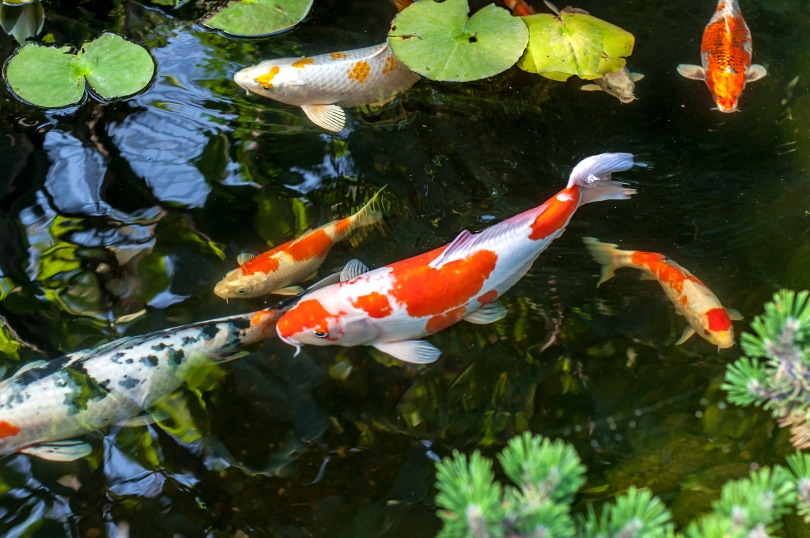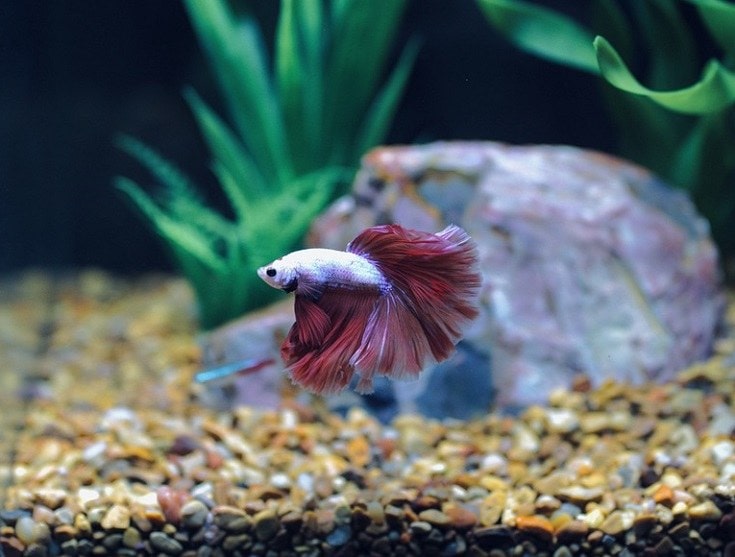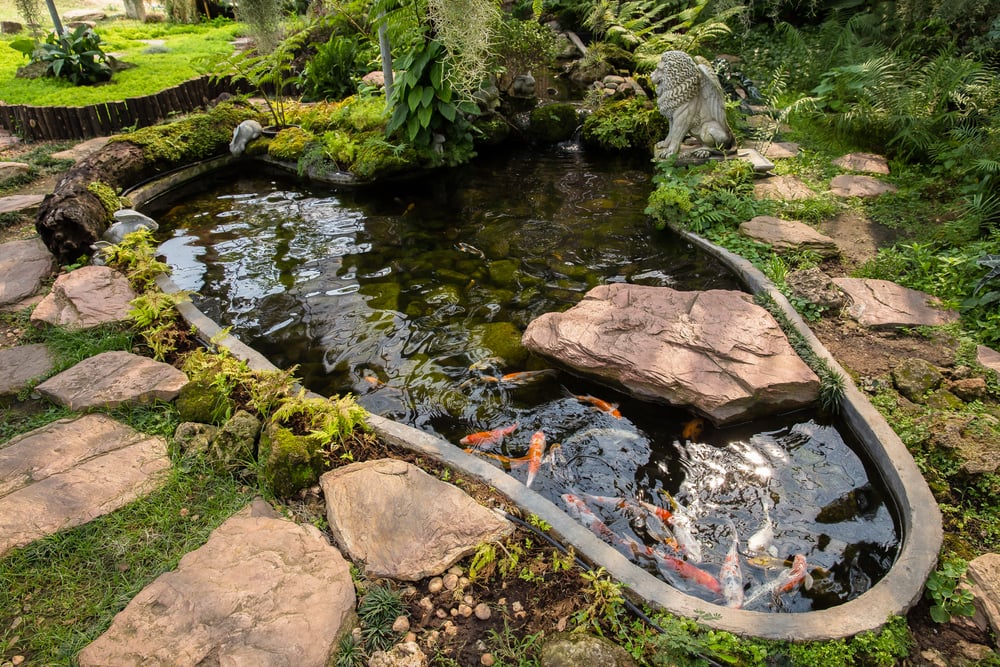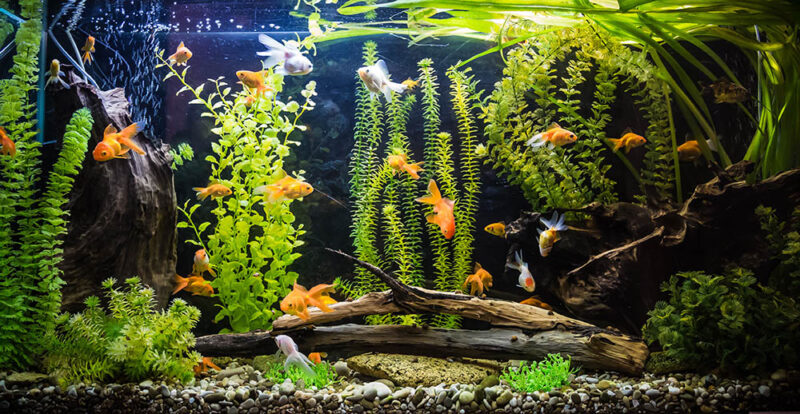If you are noticing that your aquatic plants are not thriving as they should, the type of water could be to blame. Hard water can be too harsh on some plants and stop them from getting the nutrients that they need.
But you don’t have to worry! You can have plants in your aquarium even if you’re using hard water. We gathered the top plants that can live just fine in hard water conditions, so you can add new greenery to the scene. Here are the reviews so you choose the ones that you like the best.
 A Quick Look at Our Favorites in 2024
A Quick Look at Our Favorites in 2024
| Image | Product | Details | ||
|---|---|---|---|---|
| Best Overall |

|
Bacopa Caroliniana |
|
Check Price |
| Best Value |

|
Java Fern |
|
Check Price |
| Premium Choice |

|
Greenpro Hygrophila Corymbosa |
|
Check Price |
The 7 Best Plants for Hard-Water Aquariums
1. Bacopa Caroliniana— Best Overall
| Growth Rate: | Slow |
| Max height: | 12 inches |
| Ligh demands: | Low |
| CO2 | Low |
| Difficulty: | Easy |
The hardy Bacopa Caroliniana is undemanding and easy to grow, making it the best overall plant that flourishes in hard water. It’s a beautiful plant typically used for background decoration. The leaves are usually greenish-yellow but can turn pinkish or red on the upper leaves under high lighting.
The plant produces blue flowers with five petals and can even flower underwater. It will grow in any substrate and will survive low-light levels. It does great in tall tanks because it can stand over 12 inches tall if it’s not trimmed. If you do wish to trim it, you can do this easily and create the look that you want.
Place this plant in front of aquarium equipment to hide it from view. It also provides efficient territories for fish and hiding places for fry. This resilient plant is an ideal choice for beginners.
While the plant grows slowly, it can easily overtake a short tank or surrounding plants. They can be invasive and rob other plants of their food.
2. Java Fern — Best Value
| Growth Rate: | Slow |
| Max height: | 13.5 inches |
| Ligh demands: | Moderate |
| CO2 | Low |
| Difficulty: | Easy |
The Java Fern is a hardy plant that does not require special conditions to thrive. It can grow in tanks as small as 10 gallons and doesn’t need much lighting. You can set up multiple Java Fern plants in your tank. These plants will create new plants, and you can either remove these and place them elsewhere in the tank, dispose of them, or let them keep growing to create a dense, bushy look. Since the plant is easy to care for and reproduces, it’s the best plant that flourishes in hard water for the money.
The plant has rhizomes, or hair-like strings, that attach the plant to different surfaces. If these rhizomes are buried in the substrate, the plant could either not grow at all or die. Make sure the rhizomes aren’t buried to ensure that the plant reaches its maximum beauty.
The leaves are also susceptible to rot and may develop burn spots if the plant is exposed to too much lighting.
If you're new to the world of goldfish keeping or are experienced but love to learn more, we highly recommend you check out the best-selling book, The Truth About Goldfish, on Amazon.
From diagnosing illnesses and providing correct treatments to proper nutrition, tank maintenance and water quality advice, this book will help you to ensure your goldfish are happy and to be the best goldfish keeper you can be.
3. Greenpro Hygrophila Corymbosa — Premium Choice
| Growth Rate: | Fast |
| Max height: | 16 inches |
| Ligh demands: | Moderate |
| CO2 | Moderate |
| Difficulty: | Moderate |
This Greenpro Hygrophila Corymbosa comes in three bundles to decorate your tank. These are fast-growing plants that require regular pruning to keep them under control. The plant will spread quickly and has wide, long, green leaves that give your fish fun places to hide in and explore.
This plant can help control the parameters of your tank by absorbing nitrates and ammonia. It can also minimize algae growth. It will occupy empty space fast, which helps fill your tank.
If your tank contains goldfish, be aware that this plant is a favorite of theirs to nibble on. The tender leaves of the plant can easily become damaged and look frayed from destructive fish.
4. Aquarigram 20+ Leaf Amazon Frogbit
| Growth Rate: | Fast |
| Max height: | 20 inches |
| Ligh demands: | Moderate |
| CO2 | None |
| Difficulty: | Easy |
The Aquarigram 20+ Leaf Amazon Frogbit is a floating plant. It sits on top of the water, providing coverage for fish below it. Frogbit removes ammonia, nitrates, and metals from the water without needing any CO2 to stay healthy.
The plants grow large quickly, so it’s important to remember not to let them cover other plants in the tank that require plenty of light. If the tank is small, Frogbit will also stop light from reaching fish, which can be detrimental to the tank. If you’re growing this plant, keep it maintained and only cover the portion of the tank that doesn’t need much light.
Frogbit can rot if it gets too wet on top of the leaves. Even though it floats on water, the tops have to remain dry for the plant to stay healthy.
5. AquaLeaf Aquatics Dwarf Baby Tears
| Growth Rate: | Slow |
| Max height: | 1–2 inches |
| Ligh demands: | High |
| CO2 | None |
| Difficulty: | Easy |
The AquaLeaf Aquatics Dwarf Baby Tears is most commonly used as carpeting in aquariums. This provides a beautiful aesthetic, but the plants will also continue to grow throughout the tank. They can be used as snacks for hungry fish and give them a place to hide their eggs. The plant recovers easily from nibbling fish damage.
CO2 is not required for Dwarf Baby Tears to grow, but using it can benefit the plant and speed up the growth process. The plant spreads quickly and requires pruning to keep it from taking over the entire aquarium floor.
6. Aquarium Plants Discounts Java Moss
| Growth Rate: | Slow |
| Max height: | 5 inches |
| Ligh demands: | Low to high |
| CO2 | None |
| Difficulty: | Easy |
The Aquarium Plants Discounts Java Moss comes in a 4-ounce container and is a perfect place for fish to hide in and rest. Java Moss is easy to grow and maintain. It can attach itself to various surfaces, including gravel, and is basically maintenance free. The plant has bright-green leaves that will become thin or dense depending on how much light the plant receives. For a full look, offer the plant more light. If you prefer a thin, aging look, keep the light source low.
If the plant isn’t pruned, it can eventually cover your entire tank, including the filter. Some filter coverage is okay, but too much will clog it. If algae grows in the moss, it can be impossible to remove. The best solution would be to remove the plant and start over, though a toothbrush can be used to clean the moss if you’re set on trying to save it.
7. Anubias Barteri
| Growth Rate: | Slow |
| Max height: | 7.5 inches |
| Ligh demands: | Low to high |
| CO2 | None |
| Difficulty: | Easy |
The Anubias Barteri is a hardy plant that works well for beginners. It has a strong root system with durable, beautiful green leaves that make perfect additions for the foreground, midground, or background in your aquarium.
This plant is easy to care for and can grow well in any light conditions. It can grow in substate or soil. It can also attach itself to driftwood, rocks, or other decorations and continue to grow. This plant does best in an area with a water current to avoid the buildup of algae on the leaves. It’s prone to algae growth due to the lack of movement in the leaves.
 Buyer’s Guide: Choosing the Best Plants for Hard-Water Aquariums
Buyer’s Guide: Choosing the Best Plants for Hard-Water Aquariums
Hard water can make keeping aquarium plants complicated. Some plants are too fragile for the minerals and won’t survive. If you’ve failed at keeping plants in hard-water tanks before, try plants that are well-suited for hard water instead.

What Plants to Look For
When you’re choosing plants for your hard-water aquarium, there are a few things to keep in mind. Look for plants that:
Why Does Hard Water Hurt Some Plants?
Hard water prevents some live plants from getting the nutrients that they need to survive. It keeps the plant from flourishing and can lead to dull, unhealthy, and weak leaves. It’s not your care of the plants that’s causing this, it’s the water. So, getting plants that can withstand hard water will likely solve the problem.

Live Plants in Aquariums
If you’re set on using live plants in your aquariums as opposed to artificial ones, there are pros and cons to be aware of.
 Conclusion
Conclusion
The best overall choice for a plant that thrives in a hard-water aquarium is the Bacopa Caroliniana. This plant is perfect for beginners because it’s so easy to care for. It can overtake the tank, though, so it needs to be maintained.
For a value option, we like the Java Fern. It adds beauty to the tank and can grow in almost any conditions. However, if it gets too much light, burn spots can develop on the leaves.
We hope that these reviews have helped you choose the plants to create a beautiful seascape in your hard-water aquarium.
You may also be interested in: 9 Best Flowering Plants for Aquariums
Featured Image Credit: IvanaStevanoski, Shutterstock
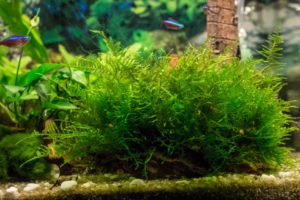
 A Quick Look at Our Favorites in 2024
A Quick Look at Our Favorites in 2024










 Buyer’s Guide: Choosing the Best Plants for Hard-Water Aquariums
Buyer’s Guide: Choosing the Best Plants for Hard-Water Aquariums